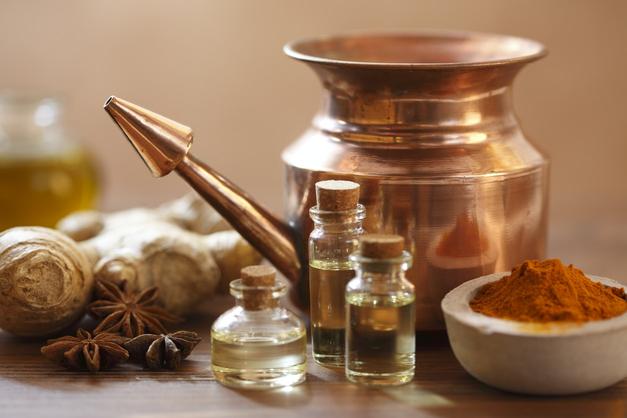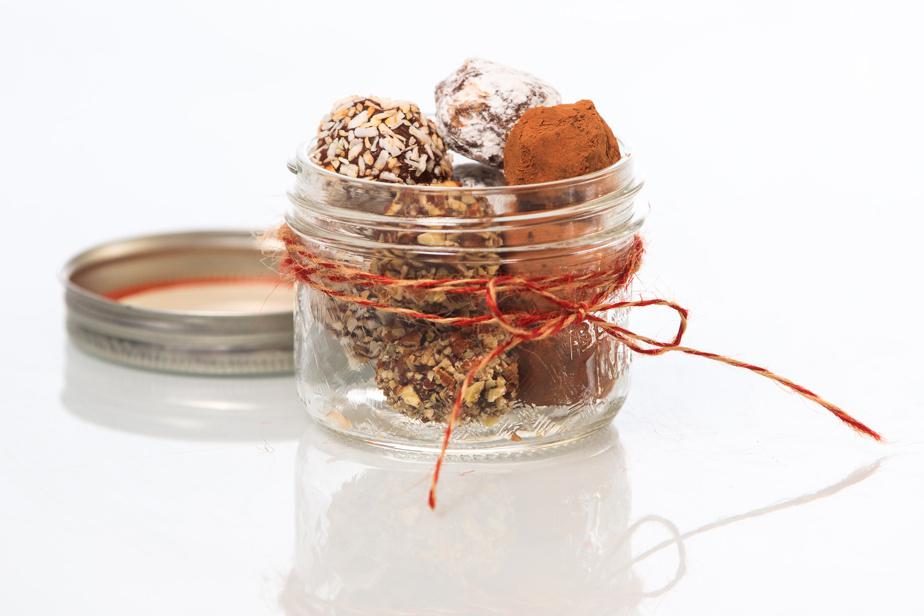Ayurvedic treatments: what are the benefits of Ayurveda in cosmetics?
Ayurveda is a traditional Indian medicine that has been watching over an inseparable entity, man and his environment, for 5,000 years. In terms of cosmetics, she uses fresh plant ingredients from India, which she includes in often personalized recipes.
In Ayurvedic beauty, only products that can also be eaten are applied to the skin. Follow the leader !
Ayurvedic cosmetics: 100% natural Indian plant ingredients
To rebalance the skin and hair, to beautify and protect them, Ayurvedic cosmetics draws from the Indian garden, among its flowers, fruits, spices and plants. In the form of powders (almond, rose, nettle, horsetail, turmeric for the best known, but also manjishta and amla, specifically Indian plants), vegetable oils and butters, hydrosols (water obtained from the distillation of plants), this cosmetic does not use any additives, artificial fragrances or preservatives.
"In Ayurveda, we use natural, vegetable and pure products", summarizes Émilie Jolibois, cosmetic ingredient research expert at Aroma-Zone.
Ayurveda, a philosophy that takes into account the whole being
In the West, our cosmetics are based solely on the analysis of the skin or hair. Our products focus, for example, on rebalancing oily skin or nourishing parched lengths. Ayurvedic beauty takes much broader criteria into account.
Ayurveda considers that the human is a whole, and that "our personality influences the state of our skin", specifies Émilie Jolibois. This discipline does not only take into account physical criteria, but also broader characteristics specific to each individual.
Where to find the basic ingredients to prepare Ayurvedic treatments?
The essential bases for Ayurvedic beauty are available:
Note: the Aroma-Zone brand (aroma-zone.com) offers, in its stores and on the Internet, a wide range of Ayurvedic ingredients, but also all the equipment necessary to manufacture its treatments (cups, bottles, etc.) On herbs-et-traditions.fr, you can find hydrosols and vegetable oils. Finally, velan.paris sells Indian plant powders.
Ayurvedic, a cosmetic adapted to each dosha
To identify the care that suits you best, you must first determine your prakriti, your primary nature. This is based on three doshas which constitute the individual in unequal proportions: one can be vata dominant – air and ether –, pitta dominant – fire and water – or even kapha dominant – water and earth.

Each of these doshas correspond to physical and psychological characteristics such as the nature of the skin or hair, but also corpulence, the appearance of teeth or appetite.
Having an ideal constitution, which corresponds to the perfect balance of these three doshas, is very rare. Most often, one to two doshas dominate, while others are insufficient. The goal of Ayurveda is to "restore balance by soothing the dominant dosha(s)", says Sylvie Hampikian, pharmaco-toxicologist specializing in natural active ingredients. If Ayurvedic plants and maneuvers are sometimes adapted to one or other of the doshas that they rebalance, many treatments are suitable for all profiles.
How to determine your dominant dosha?
To choose the Ayurvedic recipes that suit you, refer to these simplified tables.
3 skin and hair oils to adopt immediately
To be tested: a "no poo" with Indian clay
Multani mitti green clay works wonders on oily hair. Mix 4 tablespoons with lukewarm water to make a paste. We massage the roots before stretching it on the lengths and leave on for a few minutes, then rinse. A second rinse with water added with cider vinegar (2 tablespoons in 1/2 l of water) will give more shine.
This shampoo owes its washing effect to the natural saponins of Indian clay, washing agents. Hair may feel coarse due to the lack of silicone in the recipe, but it will regain its luster in the next few days. Small bonus: the clean effect lasts longer because the hair is less attacked and regreases less quickly in reaction. How much does it cost ? Less than a euro for the shampoo.
Powders, hydrosols, butters, balms, milks or oils: different uses
Ayurvedic vegetable oils, balms and butters
Nourishing, protective and softening oils, balms and vegetable butters are used in massage. Rich and melting, the butters, solid at room temperature, are obtained after pressing the pits or seeds of fruits, mango, kokum or sal, for example. Liquid oils are obtained by the same process. By mixing butter and vegetable oil, we obtain a balm, a semi-solid paste which melts on contact with body heat and is used for localized massages and for the care of dry areas of the body and face.
Ayurvedic herbal powders
Plant powders – petals, roots, bark or powdered leaves – serve as a base for making pastes used as a mask or for cleaning the skin and hair. Shikakai and reetha (soapnut) powders, which are naturally rich in saponins with cleansing properties, are widely used for washing hair.
On the face side, each has its own properties:
The basic recipe: 1 to 2 tbsp. tablespoons of plant powder in a cup + half of warm water or rose water. Mix until a toothpaste type paste is obtained, and optionally add a few drops of vegetable oil or a drop of essential oil. Apply in an even layer except around the eyes, leave on for 10 minutes without waiting for it to dry and rinse with small, gentle circular movements.
Hydrolats are floral waters in Ayurvedic
Hydrolats are floral waters that are used as lotions to be sprayed on the face to complete the cleansing, before applying an oil. Patchouli, Damascus rose, frankincense and sandalwood hydrosols are the most commonly used. Their properties are identical to those of the essential oils that correspond to them:
Milks are used to cleanse and remove make-up from the face
For any type of dominant dosha, coconut milk powder to be diluted in water, less greasy than ready-made coconut milk from the food section and without emulsifiers, is particularly effective and gentle in ridding the skin of impurities. Just pass it on the face using a cotton pad, including the eye contours, before rinsing with water and proceeding with your usual care routine. In addition, to remove make-up and mascara, opt for a sweet almond oil, without fear for the fragile area of the eye.
Our selection of Ayurvedic cosmetic products:
Ayurvedic turmeric soap, 100 g, Karawan Authentic, €7. On karawan.fr.This soap with turmeric and coconut oil gives a light foam and can also be used as a shampoo.
Organic virgin coconut oil, Ayurkanti, €9.90. On produitsayuvedices.fr. It smoothes the skin, revitalizes dry hair and replaces make-up remover.
Ayurvedic organic massage oil, 100 ml, Aroma-Zone, €7.90. In store and on aroma-zone.com. An oil rich in essential oils and with a spicy fragrance that harmonizes vital energies.
Read alsoAuthor: Anne-Sophie Douet, journalistExperts: Sylvie Hampikian, pharmacotoxicologist specializing in natural active ingredients & Émilie Jolibois, expert in cosmetic ingredient research at Aroma-Zone Article published on







